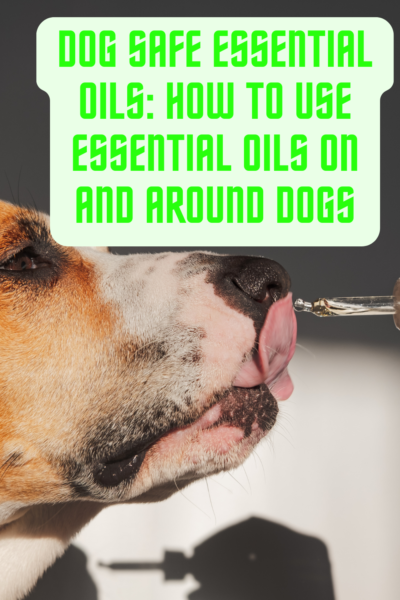Introduction
Dog safe essential oils are an important consideration when starting to use essential oils. Essential oils are becoming increasingly popular in homes for their various benefits, from stress relief to boosting energy. If you’re a pet parent, you might be wondering if essential oils can also benefit your dog or if they pose any risks. The truth is, some essential oils can be safe for dogs, but it’s essential to use them cautiously and properly to avoid potential harm.
In this blog post, we’ll explore the safe use of essential oils around dogs, which oils to avoid, and how you can incorporate these natural remedies into your pet’s life for a happier and healthier companion.
Why Use Essential Oils for Dogs?
Essential oils offer a variety of potential benefits for dogs when used correctly. These concentrated plant extracts can help with:
- Calming anxiety or stress: Essential oils like lavender are known for their calming properties and can help soothe a nervous or anxious dog.
- Soothing skin irritations: Oils like chamomile and helichrysum can assist with mild skin conditions, offering natural relief for itchy or irritated skin.
- Repelling insects: Certain essential oils, such as citronella, can act as natural insect repellents, helping to protect your dog from fleas and ticks.
- Helping with digestive support and digestive challenges– Essential oils such as peppermint or blends with peppermint can help calm a dog’s upset stomach.
However, the key is knowing which oils are safe for your dog and how to use them properly.
Essential Oils Safe for Dogs
Here are some essential oils that are generally safe for use around dogs when diluted properly:
- Lavender: Known for its calming properties, lavender oil can help with anxiety, insomnia, or stress in dogs.
- Chamomile: A soothing oil that can help with skin irritations and calming an upset stomach.
- Ginger: This oil can help with nausea, digestion, and even joint pain relief.
- Frankincense: Often used to support the immune system and alleviate inflammation.
- Cedarwood: A natural flea repellent and skin soother, cedarwood can also help calm a stressed dog.
- Peppermint: When used sparingly, peppermint oil can help with nausea, upset stomach, and cooling muscles after a vigorous play session.
While these oils are safe in small amounts, they should always be diluted before applying topically or diffusing around your dog.
Essential Oils to Avoid Around Dogs
Not all essential oils are safe for dogs, and some can be toxic. Avoid the following oils:
- Tea Tree Oil: Even though it’s known for its antibacterial properties, it’s toxic to dogs and should never be used on or around them.
- Cinnamon: Can cause skin irritation and affect digestion.
- Wintergreen: This oil can be toxic, leading to stomach upset and even liver or kidney issues in large doses.
- Pine: Can cause respiratory issues in dogs, especially if used in a concentrated form.
- Eucalyptus: While commonly used in household products, eucalyptus oil can cause respiratory distress and even poisoning if ingested by dogs.
Always do your research before introducing any essential oil into your dog’s environment.
How to Safely Use Essential Oils Around Dogs
Using essential oils around your dog requires careful consideration. Here are some best practices to ensure their safety:
- Dilute Properly: Essential oils are highly concentrated and should always be diluted before applying them to your dog. The recommended dilution ratio is typically 1-2 drops of essential oil to 1 ounce of a carrier oil (such as coconut or olive oil).
- Topical Application: If applying oils topically, avoid sensitive areas such as your dog’s face, ears, or paws. Always perform a patch test on a small area of skin to check for reactions before applying more extensively.
- Diffusing Oils: Diffusing oils is a great way to benefit from their properties without direct contact. When diffusing essential oils, make sure the room is well-ventilated, and your dog has a way to leave the room if they find the smell overwhelming. Limit the diffusion time to 15–30 minutes.
- Never Ingest: Essential oils should never be added to your dog’s food or water unless explicitly directed by a veterinarian experienced with essential oils.
- Watch for Reactions: Always monitor your dog’s behavior when introducing essential oils. Signs of discomfort, such as whining, scratching, coughing, drooling, or acting lethargic, may indicate that the oil is bothering them.
- Check the purity- You want to make sure to use essential oils that are truly therapeutic and pure. Avoid essential oils without the latin name on the bottle, ones that charge the same price for each one such as lemon and frankincense having the same price tag and in general all brands sold on Amazon, Walmart or at stores. These are not usually the highest quality.
Final Thoughts
When used carefully, essential oils can offer a range of benefits for your dog, from reducing stress to soothing skin. However, it’s crucial to remember that dogs are more sensitive to scents than humans, so less is always more. Try a very small amount first, try diffusing first, check with your vet if you experience any issues, and always prioritize your pet’s health and comfort when incorporating them into your home.
By choosing the right oils and using them safely, you can create a calm, happy environment for your four-legged friend!

Did this help you? If so, I would greatly appreciate a share on Facebook, twitter, linkedin, or pinterest.
My Favorite Products (Affiliate links- if you make a purchase I may earn a small commission)
Thrive Market - healthy gluten free, sugar free and speciality online food and household products
Silk and Sonder Monthly Journals and Planners
My Portable Infrared Sauna
Self Care Journal
Martie discounted food
Olipop - healthy soda with probiotics and prebiotics
Digestion Kit
Stress Oils








